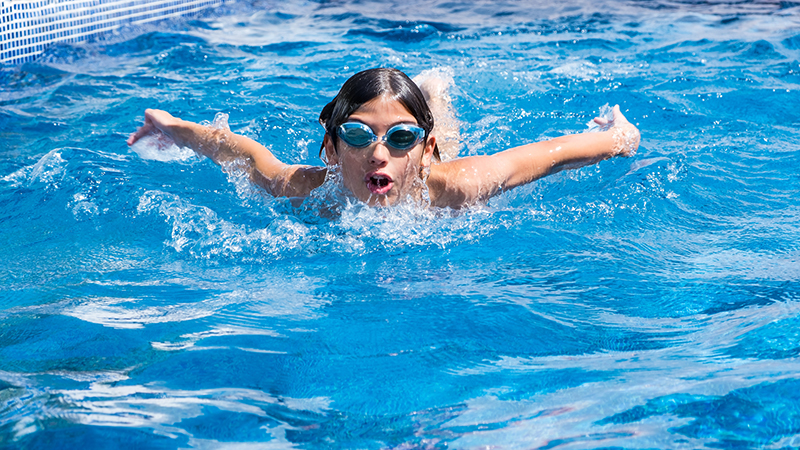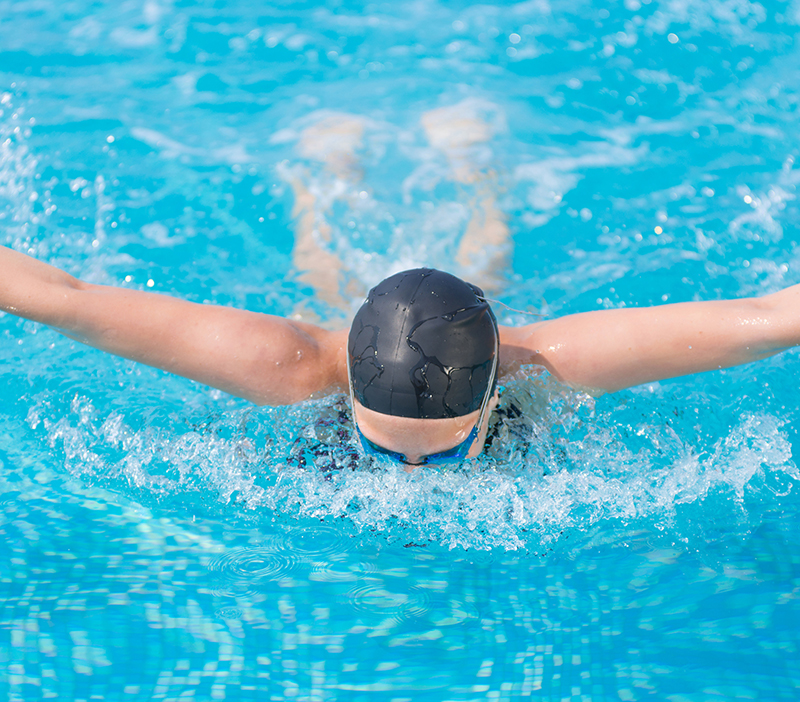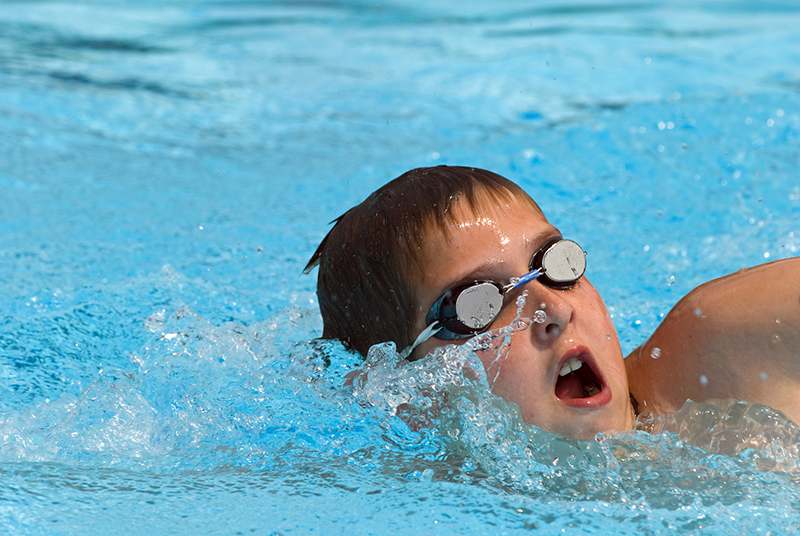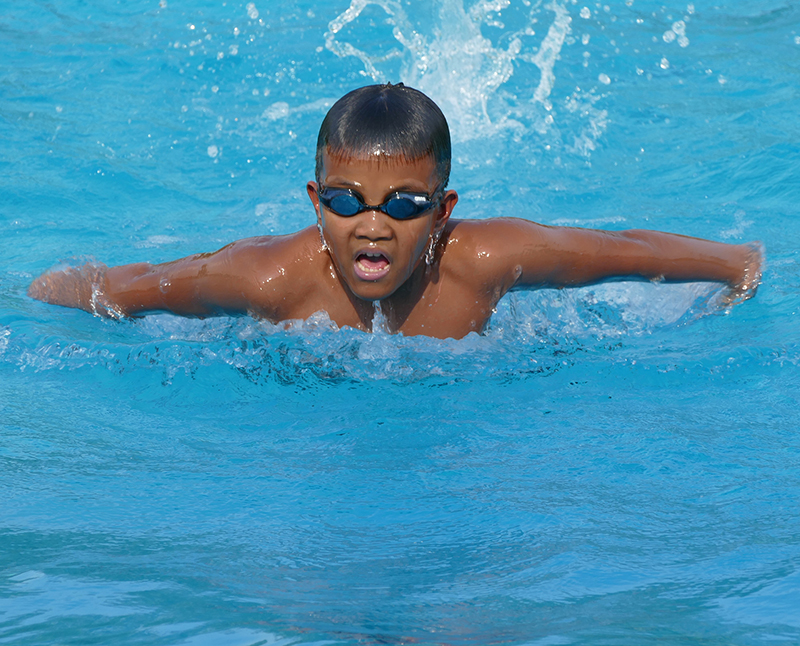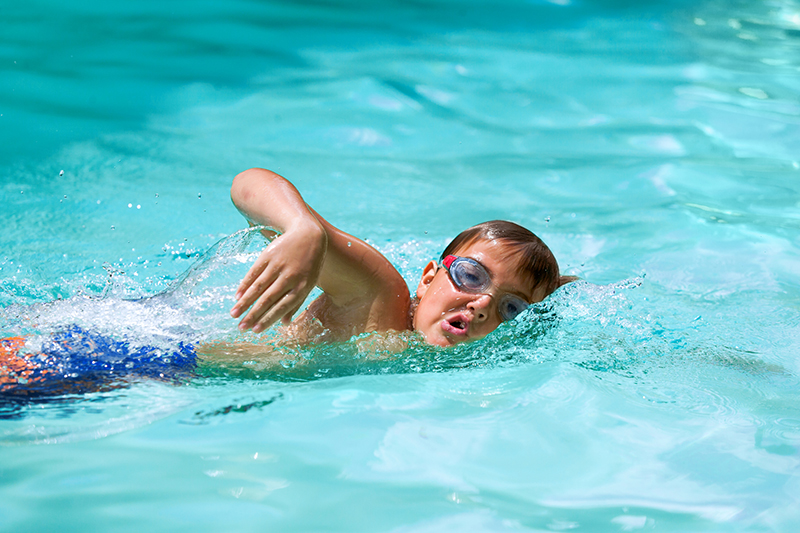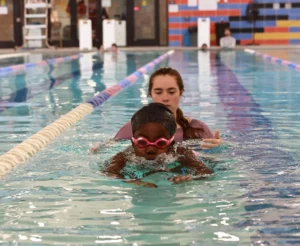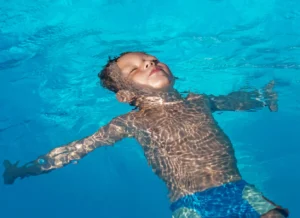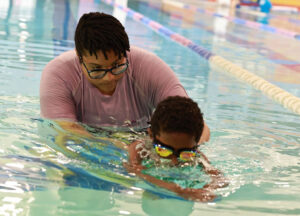Tips for Making Rhythmic Breathing Second Nature
One of the biggest challenges for new swimmers is learning how to breathe in water efficiently. Proper breath training for swimming is essential for maintaining endurance, preventing fatigue, and improving overall technique. Mastering when and how to breathe allows swimmers to complete laps smoothly without discomfort or swallowing water.
Proper breathing while swimming is the best way to increase lung capacity. Proper breathing techniques also improve speed and endurance.
These step-by-step instructions will guide you from beginner to intermediate breathing techniques.
Getting Comfortable with Your Face in the Water
While swimming, you want to establish a constant rhythm of slow exhalation through your nose and mouth.
Before beginning complex breathing patterns, get comfortable putting your face in the water.
Start submerging your face briefly while floating or holding onto the wall.
Exhale fully through your nose and mouth, raise your head out of the water, then inhale through your mouth.
Gradually increase your duration underwater until it begins to feel natural. This acclimates you to immersion in water and helps build basic breath control.
Breathing in Swimming – Mouth or Nose?
For beginners, mouth breathing is usually recommended since it enables ample air intake for swimming demands. Some argue nose breathing strengthens the diaphragm and keeps the sinuses clearer.
In reality, most swimmers use a combination. They inhale quickly through the mouth for volume, then exhale through the nose. The mouth is better for rapid inhalation above water, while the nose can more easily release air slowly through the water.
With practice, you’ll find the right balance and coordination.
How does breathing in water affect Asthma?
If your health concerns extend to breathing, we have great news! Swimming induces fewer symptoms of exercise-induced asthma than any land sport.
The Basic Beginner Technique: How to Breathe Freestyle Swim
Once you’re comfortable swimming freestyle short distances of 10-15 feet without stopping, it’s time to incorporate basic side breathing. This is the most foundational breathing technique.
Here’s how it works:
- Keep your face angled down towards the bottom of the pool, neck elongated.
- As you pull your arm through the water of a stroke, turn your head to one side, with your mouth clearing the water. Inhale normally through your mouth.*
- Return your face down and exhale as you pull your second arm through and prepare to turn your head to that side. Repeat the inhale.
- Continue alternating which side you breathe on with each arm cycle.
- Start by breathing every three strokes, then progress to once every two strokes when this feels smooth.
*Alternately, instead of exhaling in the water, you may also inhale and exhale as your head exits the water.
Two important tips:
- Don’t lift your head; just turn to the side.
- Avoid holding your breath if possible—maintain a constant rhythm of inhaling and exhaling.
With practice, this basic breathing practice will begin to feel natural.
Advancing your Breathing in Swimming Technique
As you build endurance, work on refining your breathing technique with these intermediary drills:
- Breathe Every 5 Strokes
Take your side breathing to the next level by waiting five full strokes before breathing to increase your lung capacity. - Breathe Every 7 Strokes
Challenge yourself to breathe every seven strokes for short 25-yard intervals to test your body’s efficiency. - Breathe to Both Sides
Alternate the side you breathe on with each lap to keep your body balanced and prevent muscle imbalances. Make this a habit. - Breath on Specific Strokes
Inhale timing varies in different strokes.- Freestyle: Breathe every 2-3 strokes
- Backstroke: Inhale as one arm enters the water (e.g. only breathe when the right arm enters the water)
- Breaststroke: Inhale during the recovery phase
- Butterfly: Inhale at the end of each stroke cycle
Practice adjusting your breathing pattern for each stroke.
- Unilateral Breathing
Occasionally, try swimming entire laps, breathing only on your weaker side. This builds lung power and strength equally on both sides. Bilateral breathing can help make you a faster swimmer. - Rotary Breathing
Quickly turn your head to one side and inhale. Then, turn your head to the opposite side to exhale underwater. This rapid rotation reduces drag and resistance, which is helpful in competitive swimming.
With consistent practice and refinement, efficient breathing will start to feel effortless. You’ll be ready to swim longer distances without tiring or stopping.
Work on making your swimming as relaxed and rhythmic as possible by staying mindful of your breath.
Additional Tips for Breathing in Swimming
With practice and dedication, breathing can transition from awkward and frustrating to natural and fluid.
Keep these tips in mind:
- Master breathing slowly—start with short distances and frequent rests. Gradually build your endurance.
- Relax your neck and chest rather than lifting your head to breathe.
- Practice bilateral breathing early on to prevent long-term muscle imbalances.
- Remain calm—fast breathing due to anxiety or rushing sabotages technique.
- Perfect your side breathing before beginning advanced breathing techniques.
- Don’t try to hold your breath – properly breathing out is just as important as breathing in!
- Listen to your body. Rest when fatigued to avoid slipping into bad habits.
Breathe with Us!
Ready to take your swimming and breathing skills to the next level?
Learn-to-Swim classes at WeAquatics provide the ideal environment to refine your technique at any age. Our certified instructors meet each student where they’re at, providing personalized guidance to meet your swimming and breathing goals!
Our step-by-step guidance helps you to progress at your own pace.
With consistent practice with our skilled coaches, efficient breathing in swimming will become second nature. Don’t let breathing hold you back—sign up for LTS lessons today! Together, we’ll make you a proficient, natural swimmer.

